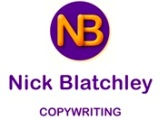I started my secondary school (a grammar school, back then) back in the mid 1960s. There were many culture shocks in moving from primary school, but one of the most noticeable was that we (the boys, at least) had to get used to being addressed by surname only. Not only that — we were expected to address each other that way, too.
I suspect that it was somewhat old-fashioned, even then. The headmaster who’d just left, by all accounts, suffered somewhat from delusions of public school. As my elder brother was also there, I suppose I was lucky not to be called “Blatchley Minor”.
This changed radically during the time I was at the school, and by the time I left, first names (and even diminutives) were routinely used by everyone. That hadn’t extended to the workplace, though. In the offices where I experienced my first vacation work, everyone but the most junior employees were Mr Smith, Mrs Jones, Miss Brown (Ms wasn’t to appear for some time), while male colleagues called each other by surnames.
How It’s All Changed
Today, it’s almost the reverse. If you go to a networking meeting, for instance, you’ll be introduced to Dave or Liz (just to pick a couple of names at random) and maybe also learn their surnames. In fact, it can sometimes go to ridiculous extremes — have you ever tried to find “Dave” in LinkedIn?
It’s inconsistent, of course, as is anything that happens haphazardly. Footballers, authors and politicians, among other groups, are still routinely known by their surnames if you’re lucky. We haven’t reached the extreme that you find in Iceland (where most people don’t have surnames as we know them) where even as a customer in a bank you’d be addressed by your first name — but we’re heading in that direction.
In any case, I think it’s fair to say that, if the world’s most famous fictional spy were starting out now, his catchphrase would almost certainly be “The name’s James — James Bond.”
Formal to Smart Casual
There’s also been a notably parallel change in what’s considered appropriate dress for work. If you’re my sort of age, you might remember what going to work was like when you were starting your career. If you worked in an office or in a customer-facing role, you couldn’t turn up in anything less than a suit and tie, or equivalently smart female clothes. You’d be sent home if you did.
It’s different now. Yes, there are roles where this still applies, but they’re gradually disappearing. Nowadays, the dress code for most jobs is “smart casual”, and in most offices you’d look overdressed in the full suit and tie of a few decades ago.
Smart Casual in Language, Too
Just as the conventions as regards dressing for work and addressing your colleagues have changed, so has what’s considered appropriate language for business writing. No longer do people expect ultra-formal English, let alone the kind of convoluted mumbo-jumbo designed to prevent you understanding. Business writing, too, is now “smart casual” by default.
There are exceptions, of course. Legal language still has to be formal and precise, for instance — you’d better not write your Ts&Cs too casually. On the whole, though, business writing that’s intended to be read by ordinary people (including other business owners) needs to be just like business dress — smart casual. That means correct grammar and vocabulary, but also everyday colloquialisms — and definitely contractions, wherever possible.
When it comes to knowing how to dress or what to call someone, most of us get it right instinctively — but writing in the appropriate way is another matter. Writing naturally and spontaneously takes a great deal of skill and practice, so drop me a line to find out more about how you can have this.

